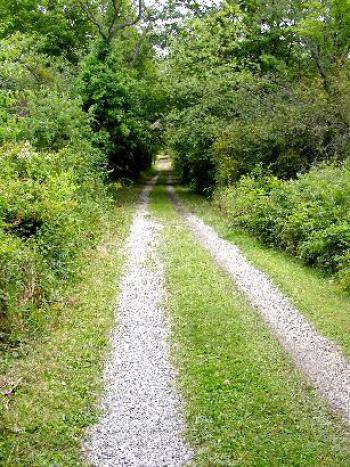Serendip is an independent site partnering with faculty at multiple colleges and universities around the world. Happy exploring!
Blogs

"Value the opportunity to think unguided by the world"
I was reading my Meeting's newsletter this morning. It began w/ this
(so relevant!) quote: Don’t feel restricted by the silence; it is there
to set you free from the pressures of life… Value the opportunity to
think unguided by the world. Learn what you feel you need to know,
let other information pass. No moment of silence is ever a waste of time.
(Rachel Needham, 1987, Quaker Faith and Practice, The Yearly Meeting
of the Religious Society of Friends [Quakers] in Britain, 1995, 2.17.)
Is it dangerous to label certain things are being "relevant" only for certain students?
Today during the presentations the idea that certain themes are more "relevant" to certain students came up. I'm wondering if this is a fair question to ask? While I too see the merit in quetioning whether or not we are teaching certain topics correctly (civil rights, slavery, and the black power movements were discussed in class), I don't think it is necessarily fair to argue that these topics are more relevant to certain students based on race. Perhaps it is true that a black student might glean different meaning from a lesson on US slavery than would his or her peers of different races, but I'm also sure that students of all races would take something important from the lesson. By suggesting that a lesson would be MORE relevant to this student because he or she is black, however, I think we risk re-inforcing a commonly used concept that being white means being "culturless." I'd like to aruge that EVERYTHING we teach in a classroom is equally relevant to all students----relevant to what it means to be a human, and what is means to understand common human phenomena that are still present today in the world---like hate and prejudice. Students of different races might take different forms of meaning from certain topics, but I think it might be dangerous to suggest that some topics are inherently more relevant to certain students. We wouldn't want to block students from exploring things that they find truly interesting simply because they do not belong to the group to which this topic is truly "relevant."

Final debrief of the Canery
As we are approaching the end of semester, we stand at the cross rod to really think back and evaluate what we have done this semester.
Last Thursday, when were discuss a text about participatory action research by Lois Weis and Michelle Fine in Working Method, we touched based upon many critical questions about the effects and purpose of our art workshop in prison. I want to expand more on that topic as well as our last workshop.
Firstly, one valued was emphasized was to be able to challenge the traditional power relationship. Such a statement was very easy to say but hard to execute. In our case, two groups of women were brought together and doing the same art project corporately. Various background and social status were mixed in the room and conflicts were expected. I don’t know which group benefits more from such a gathering. However, we can’t that each one us were able to see a different side of the concept were talking about form others, For me, even their positions in this society were inmates. I was able to, for the first time, to have “real-life” interpretation of what dies justice system do to individuals’ lives.

Make-up of the post from November 29th
I am really trying to make up the two posts I missed for Barb’s class
I think want to reflect more on the last last Friday’s discussion about looking-glass identity transformation inside the prison. The reading was very comprehensive and easy to read however the indications behind all text are very provoking and indeed caused many disagreement and tensions.
Two important things were mentioned throughout the text which I think are really relevant to our conversation: labeling and rehabilitation.

Memo #2 image
This memo, I was trying to emplore the similarities and differneces between our Canery visits and Visiona dn Alliance in Offending women. I found when comparing either two of these three, many interesting anf similarities appear. However, the length of the porgrma made the final differnece.  I am not sure whihc road( the porgram) will take womne furhter.
I am not sure whihc road( the porgram) will take womne furhter.

Memo #1 image
 In the first week's memo, I talked about viewing the issues of disadvantagous class with differnet lences. Through the socialeconomic lence or historical lences, we will be able to see the differnece elements that might not be as obvious as it should be in other lences. Also, it's important ot consider question from various perspectives.
In the first week's memo, I talked about viewing the issues of disadvantagous class with differnet lences. Through the socialeconomic lence or historical lences, we will be able to see the differnece elements that might not be as obvious as it should be in other lences. Also, it's important ot consider question from various perspectives.



